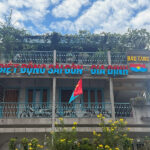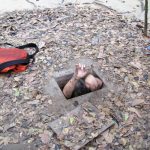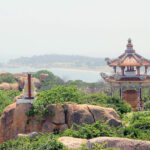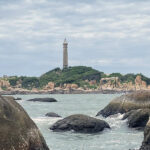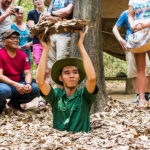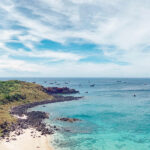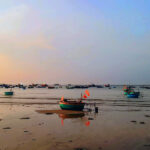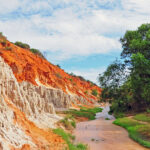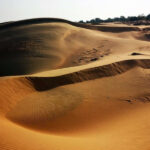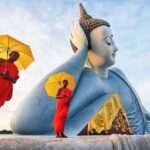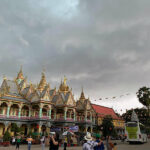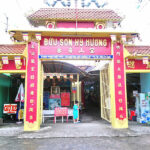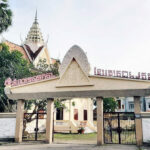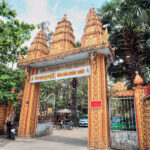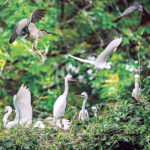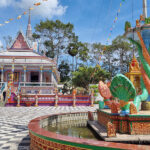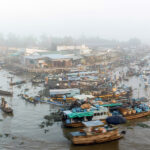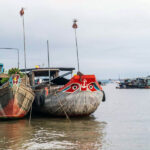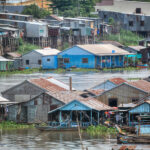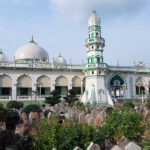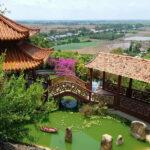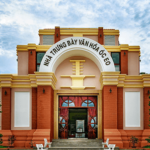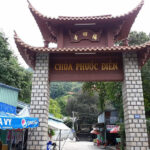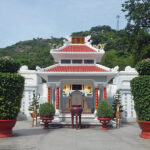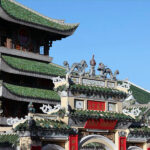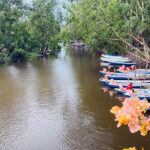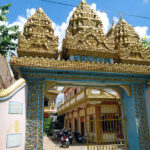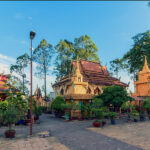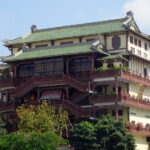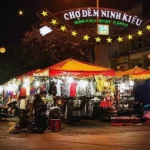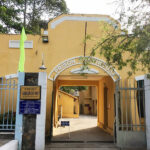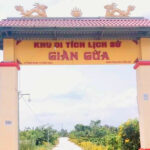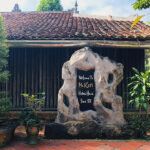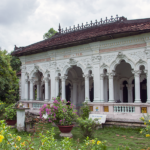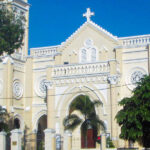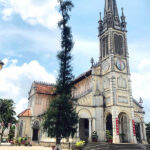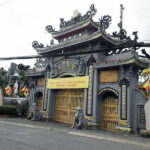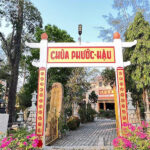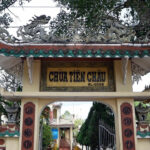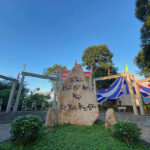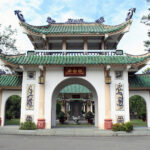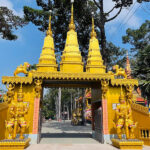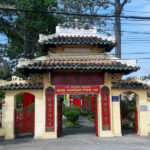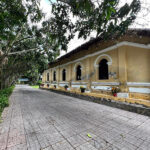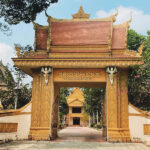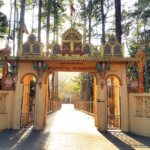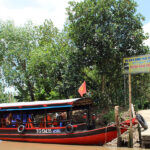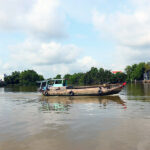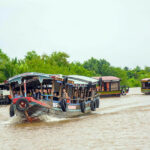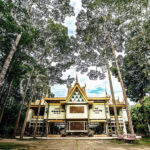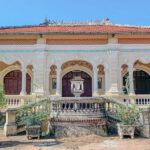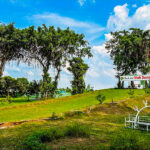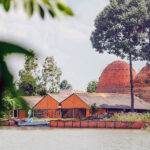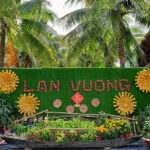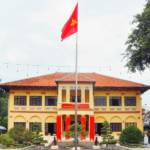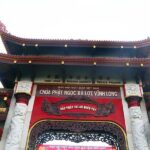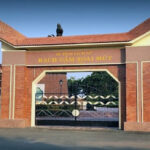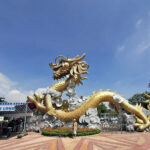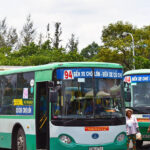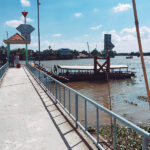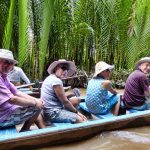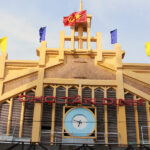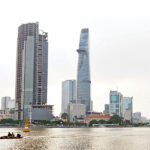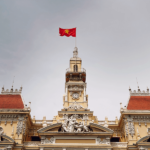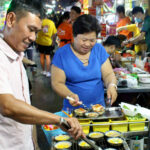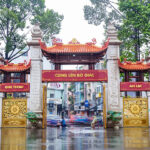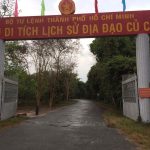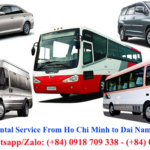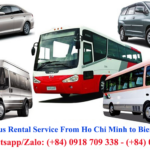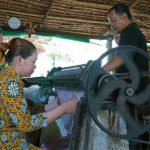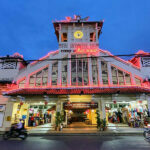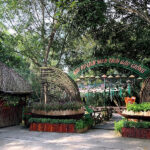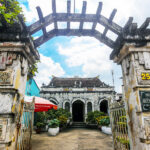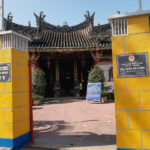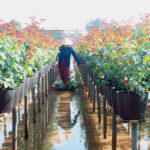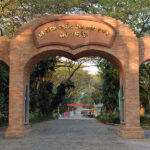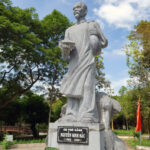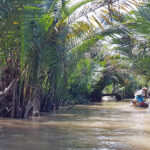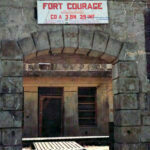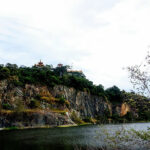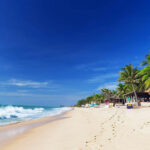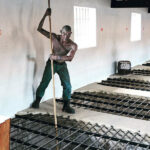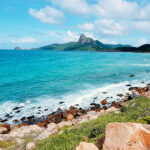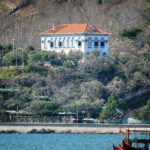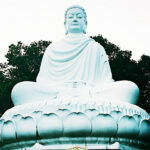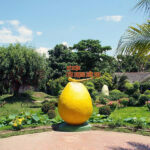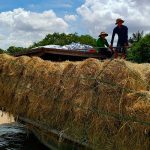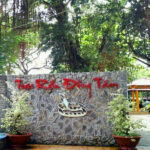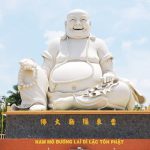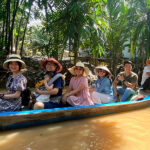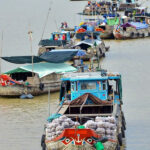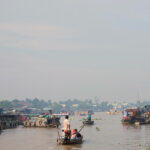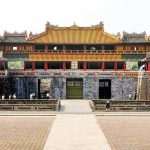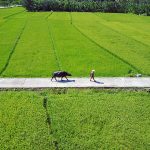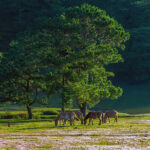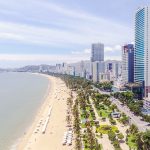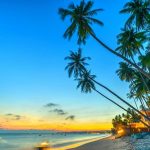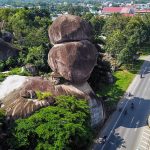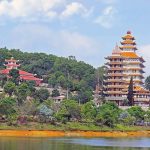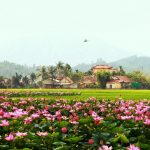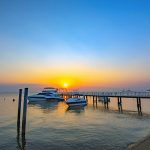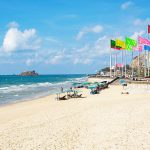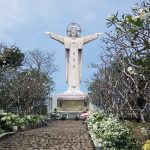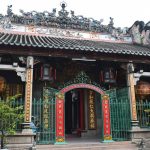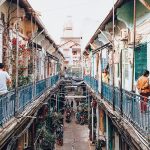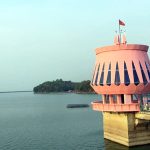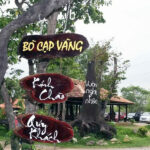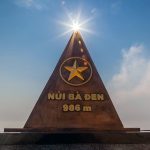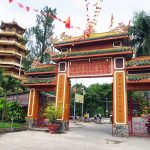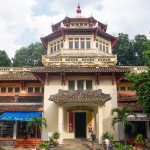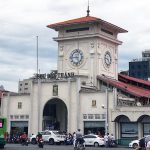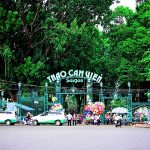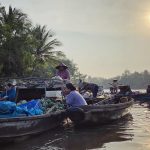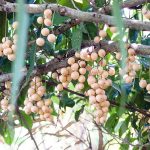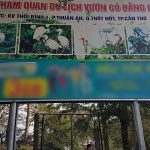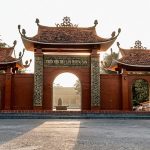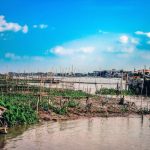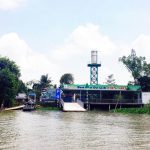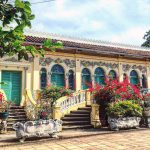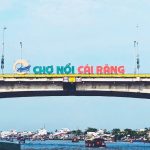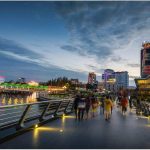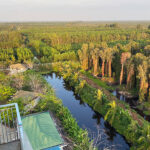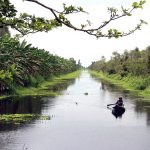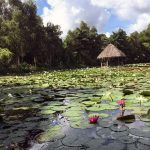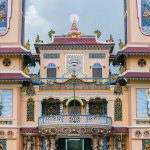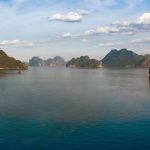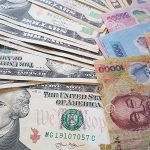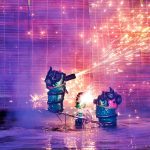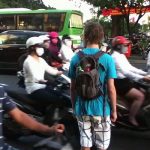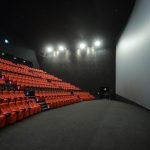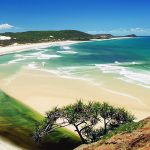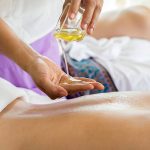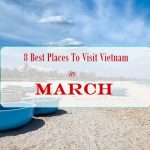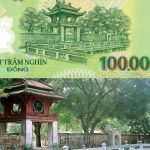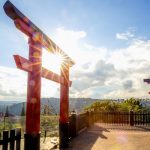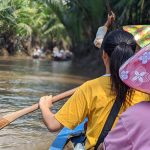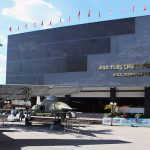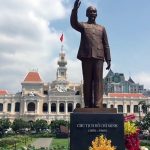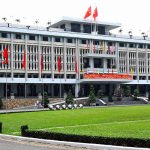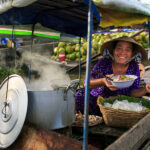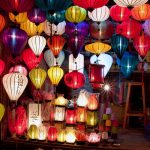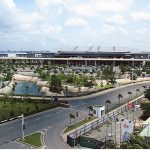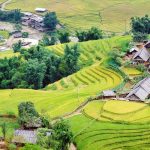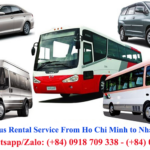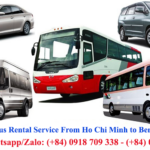Da Nang lies on the coast of the East Sea at the mouth of the Han River. It has a well-sheltered, easily accessible port since many centuries ago.Thanks to its increasingly important position and role in the Central region, Da Nang has developed and designated as a first-class city which has been attracting a lot of tourists to come to live and visit.
What is the best time to explore Da Nang?
Da Nang has a tropical monsoon climate with two distinct seasons: a dry season from January to the end of August and a wet season from September to December.
The highest average temperature is at 35°C, lasting from May until September, made Da Nang becomes a popular retreat among locals, so expect large crowds. From average temperature from January to April is at 25°C with sunny skies and low humidity levels, this would be the best time to explore the city or enjoy the beach.
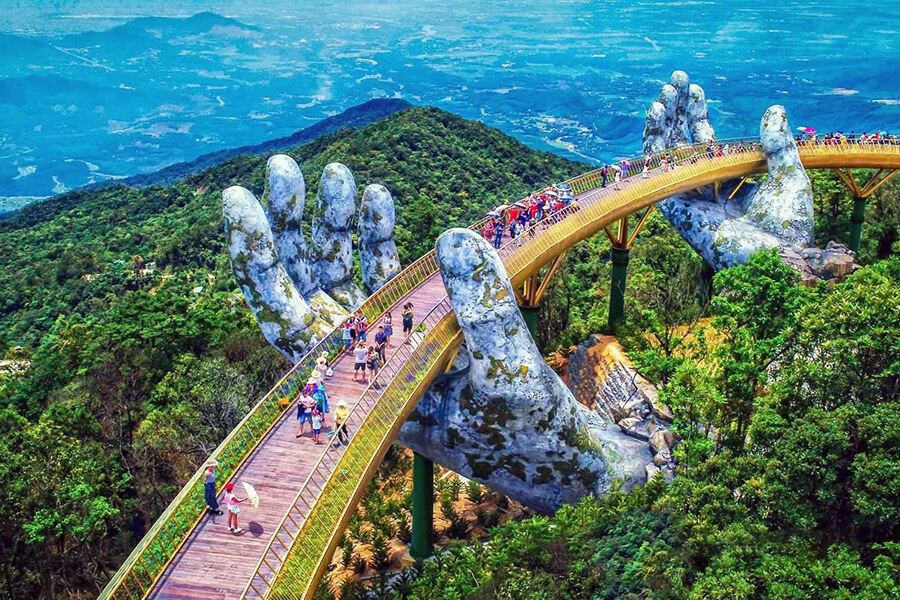
Da Nang is a transitional place between the Northern and Southern climates, with the dominant tropical climate in the South. Each year there are two distinct seasons: the dry season from January to July and the rainy season from August to December. Sometimes there are cold spells in winter but they do not last long and the weather is not very cold.
Late December to late March: The weather is cool and pleasant, most ideal for spring trips. Prices for hotel and food services at this time are said to be the most stable of the year. Note, visitors should bring a thin jacket because it can be chilly in the evening, and sometimes there is spring rain.
Early April to mid-September: This is the best time to travel to Da Nang, but it is also the peak summer tourism season, quite crowded and expensive. April is the season when forest trees change their yellow and red leaves on Son Tra peninsula.
Mid-September to late December: The weather is no longer hot, it starts to rain sporadically but does not last long. The peak season has passed, so air tickets, accommodation services, and meals are reasonably priced.
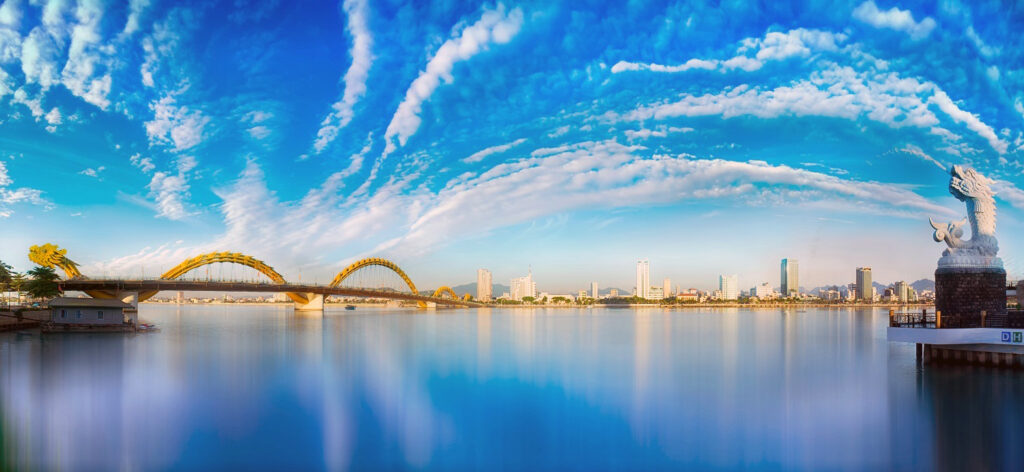
Source: Tang Trung Kien/Shutterstock
How to get here?
Any vehicle can take you to Da Nang. Besides the advantages of landscape, the convenience of transportation is also an advantage of this city. You can go by plane, train, bus, motorbike,…
Tourists from Hanoi and Ho Chi Minh City often travel by plane, with ticket prices ranging from 1,300,000 – 3,000,000 VND round trip, depending on the time of booking. Flight time is about 1 hour.
With more time, visitors can take the train to experience the scenery along the way, especially the section through Hai Van Pass if you come from the north. Train tickets from Hanoi or Ho Chi Minh City to Da Nang cost from about 700,000 VND to 1,300,000 VND one-way, corresponding to air-conditioned soft seats and four air-conditioned sleeper beds. Travel time is about 17 to 18 hours.
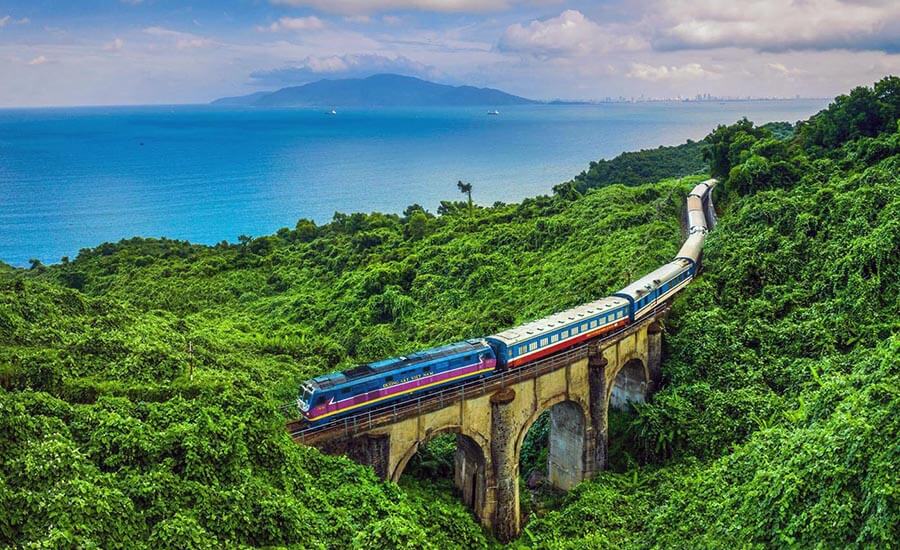
Tourist bus: buses to Da Nang are usually North-South sleeper buses. Ticket prices and quality do not differ much, you can refer to the ticket prices of these companies: Futa, Dinh Nhan, Hoang Long… Traveling time takes around 15 – 20 hours and ticket fares cost from 600.000VND/ a ticket.
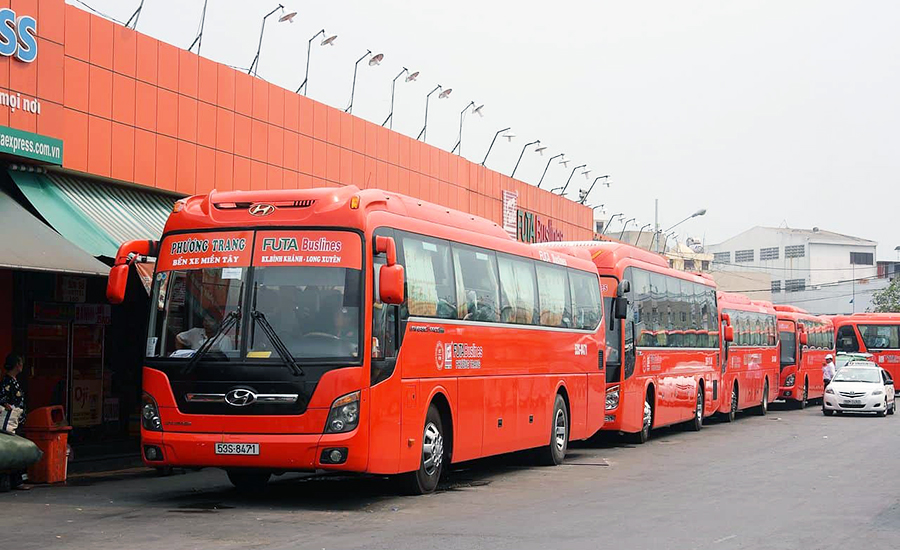
Futa bus – one of the famous tourist bus to Da Nang
Booking private car with a driver is also a good way to explore Da Nang as it’s flexible and easy for you to stop, rest and admire the beauty of the road along way.
Tourist spots in Da Nang
My Khe beach
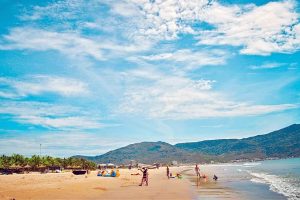
My Khe beach is one of the most beautiful beaches in Central Vietnam. It is approximately 10km long, lasted from the base of the Son Tra Peninsula to the Marble Mountains (Ngu Hanh Son), and has fine white powdery sand, gentle waves. The beach is also famous for its blue sky, smooth white sand, gentle slope, clear & warm water, especially from January to September.
With the lack of large waves, associated with the effort of the local government such as keeping the beach clean, safety for visitors, free admission for tourists, great accommodations…My Khe Beach is an ideal and safe place not only for adults but also for children to swim, enjoy magnificent scenery and games on the beach.
Son Tra Peninsula
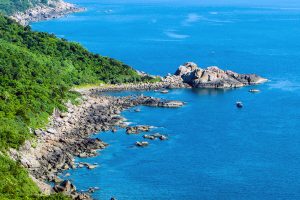
Son Tra is the name of a peninsula and a mountain in Son Tra district (named after the peninsula), located about 10 km from the city center. Son Tra peninsula along with Hai Van pass, Danang Bay surrounds the city.
Because of its location, Son Tra is like a stele to shield Da Nang from natural disasters coming from the sea. It’s also historical remains and natural ecological region rising nearly 700m high from the sea level.
Coming here, visitors can participate in many exciting activities such as scuba diving to see coral, fishing with fishermen, admiring the city from a helicopter, on top of Ban Co…
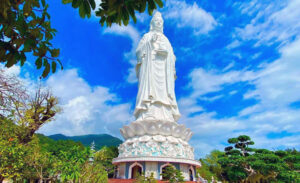 In particular, Linh Ung pagoda is located the top of the hill is also a spot you should not miss. This is where the tallest statue of Avalokiteshvara Buddha in Vietnam is located, facing the sea.
In particular, Linh Ung pagoda is located the top of the hill is also a spot you should not miss. This is where the tallest statue of Avalokiteshvara Buddha in Vietnam is located, facing the sea.
Inside the statue there are 17 floors, each floor has an altar of 21 Buddha statues with different shapes, postures and facial expressions.
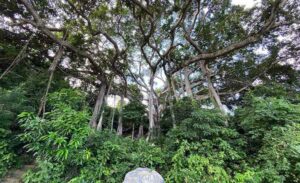 On the peninsula, there are side roads leading to many beautiful beaches such as Bai But, Bai Nam, Bai Da Den, Bai Da, Mui Nghe, Bai Rang, Bai Bac… The sea around the peninsula have many beautiful coral reefs. In addition, there is an banyan trees which have been exiting nearly thousand years with a unique shape suitable for photography.
On the peninsula, there are side roads leading to many beautiful beaches such as Bai But, Bai Nam, Bai Da Den, Bai Da, Mui Nghe, Bai Rang, Bai Bac… The sea around the peninsula have many beautiful coral reefs. In addition, there is an banyan trees which have been exiting nearly thousand years with a unique shape suitable for photography.
The peninsula is also home to hundreds of animal species such as stag, monkey gibbon and especially the red-shanked douc with a population of about 300 – 400 animals, strictly preserved.
Hai Van Pass
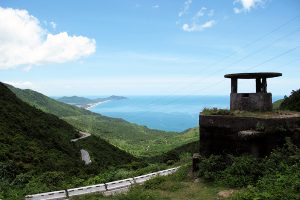
Hai Van Pass is also known as Ai Van Pass or May Pass (because the top of the pass is often covered with clouds), 500 m high compared to sea level, 20 km long, across the Bach Ma mountain range in the middle of the border between Thua Thien Hue and Da Nang.
Today, on the top of Hai Van pass, there is still a trace of a gate. This gate is called Hai Van Quan, built in the Tran dynasty, and was restored in the Nguyen dynasty (1826). Standing here, you can admire the beautiful view of the sea in a distance. On have the sensation of being in a paradise of clouds. Hai Van Pass has been a source of inspiration for many poets.
Museum of Cham Sculpture
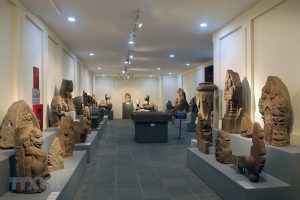
Da Nang Museum of Cham Sculpture is the largest museum exhibiting Cham artifacts in Vietnam. This museum was built in 1915 by the French. In 1936, the Museum was expanded and opened to the public in 1939. It has a total area of 6,673 m², of which the exhibition area is 2,000 m².
The total number of art objects on display at the museum is up to about 500 items and are divided into 10 rooms corresponding to the geographical areas where they were discovered including the My Son, Tra Kieu, Dong Duong, Thap Mam, Quang Tri, Quang Nam, Quang Ngai, Kon Tum, Quang Binh and Binh Dinh.
The compound of the museum blends harmoniously with the local landscape which gives tourists a chance to relax and feel immersed in the golden past of Cham civilization.
Location: No 2, Road 2/9, Binh Hien, Hai Chau, Da Nang.
Temple of Caodaism in Da Nang
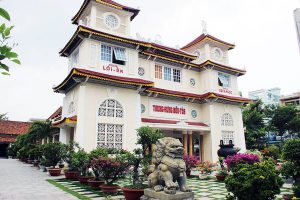
Cao Dai religion was born in 1926, originating from Tay Ninh. During the period between 1934 – 1960, Caodaism developed strongly and many temples were built from the south-eastern area to Hue.
In 1956, a group of followers built the Trung Hung Buu Holy See at 63 Hai Phong, Da Nang city. It is exactly like the miniature replica of the one in Tay Ninh. The temple has 03 doors, Caodaist dignitaries go to the middle door, the two sides have two smaller doors for men and women separately. The altar is dedicated to the Left Eye shining on the earth.
On the upper side, there is a picture of the meeting in heaven of the five first leaders of the world’s major religions: Lao Tzu, Buddha Shakyamuni, Jesus Christ, Confucius, and Mohammed. In the temple, the Caodaist dignitaries pray four times a day, at 6 am noon, 18 pm, and midnight.
Location: 63 Hai Phong, Thach Thang, Hai Chau, Da Nang.
Marble Mountains
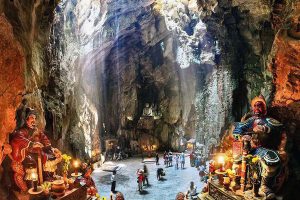
Marble Mountains also called Ngu Hanh Son (five elements mountains) is a cluster of five marble and limestone hills located in Ngu Hanh Son District, approximately 8km south-east of Da Nang city, close to the sea. The five mountains were named by King Minh Mang (a King of the Nguyen Dynasty) according to five elements of nature: Kim (metal), Thuy (water), Moc (wood), Hoa (fire), and Tho (earth). Each of them carries with it different legends and mysterious beauty. Of the five mountains, Thuy Son is the largest and the most beautiful, making this a tourist destination.
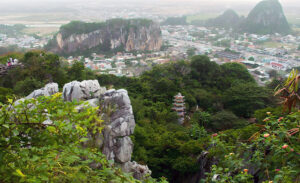
Following the trails through the mountains in Marble Mountains, visitors will suddenly turn a corner into a certain cave or temple. At Kim Son, there are Quan Am pagodas and caves; Hoa Son has Linh Son pagoda and Huyen Vi cave, Pho Da Son pagoda and cave; Tho Son has Long Hoa and Hue Quang pagodas; Thuy Son has Tam Thai, Linh Ung, Tam Ton, Tu Tam pagodas…
Most of the pagodas here have their backs against the mountain. Although they are not too high, they are quiet and sacred. With the cool breeze blowing in from the sea and the green space of mountains and trees, visitors will easily feel a world of peace and serenity.
The Marble Mountains was officially given the National Special Relic certificate by the Ministry of Culture, Sports, and Tourism on January 20, 2019.
Non Nuoc beach
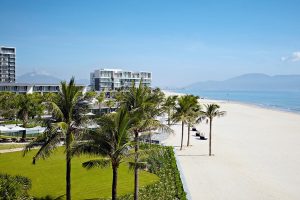
Non Nuoc Sea is located in Hoa Hai Ward, Ngu Hanh Son District, Da Nang City. This place is about 8 km from the city center to the southeast. The beach stretches for 5 km, with clean and white sand to the north and the south of Ngu Hanh Son.
Although it was taken into tourism exploitation many years ago, this beach still retains its inherent beauty with an unspoiled environment. With the calm wave, it really suitable for tourists who like to have a sea-bath and sunbathe. Lifeguards are always here for security reasons and emergencies. This is a perfect place to relax and bathe.
Non Nuoc Marble carving village
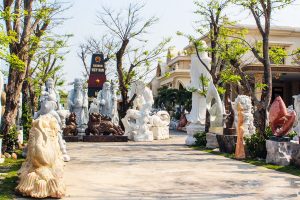
The marble-carving handicraft located at the foot of Ngu Hanh Son Mountain is the famous traditional village of Da Nang city with fine art stone products. It was formed in the 18th century. The first person to set up the village and created a carving job was Mr.Huynh Huynh Quat. The raw materials are obtained from marble mountains. Then, they will be sketched, carved, and polished to achieve the final products. Products from craft villages are diverse and rich,
from common rudimentary items of life ordinary life like a pestle, the mortar … to sophisticated jewelry, Buddhist and saint statues, animals and bracelets…
Phong Nam ancient village
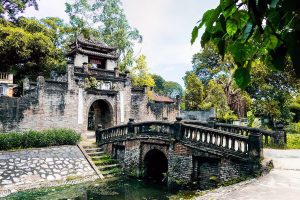
Phong Nam ancient village is located in Hoa Chau commune, Hoa Vang district, about 10 km southwest of Da Nang city center. This is one of the rare villages in the city that still retains the pristine features of ancient Vietnamese villages with bamboo banks, rice fields, communal houses and the simple, honest lifestyle of the local people.
The attraction of Phong Nam ancient village also lies in ancient architectural works such as communal houses, pagodas, temples, ancestral churches, and clan churches. Currently, Phong Nam ancient village still retains many ancient houses, some of them have been exiting for more than 100 years old to nearly 200 years old and still well preserved make the village become a popular spot who want to discover a traditional Vietnamese village.
Ba Na Hills
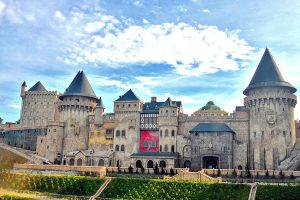
Ba Na is a nature reserve and a resort complex located about 25km southwest of Da Nang center, on the top of Chua Mount, around 1,500 m above sea level, with the average temperature is varying between 18 – 20 degrees. This is considered one of the leading resort tourism complexes combined with entertainment areas in Vietnam. To serve the needs of the tourists, many bungalows, villas, and hotels sprung up along the slopes, on top of Chua Mount.
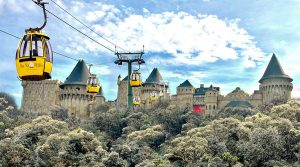 With a modern system of cable cars, it helps visitors get a panoramic view, very miraculous and attractive while enjoying the feeling of flying in the blue sky amidst the clouds and wind. Ba Na by night is also more wonderful. There are also regular campfire nights, promoting mountain specialties and creating conditions to help tourists go on picnics
With a modern system of cable cars, it helps visitors get a panoramic view, very miraculous and attractive while enjoying the feeling of flying in the blue sky amidst the clouds and wind. Ba Na by night is also more wonderful. There are also regular campfire nights, promoting mountain specialties and creating conditions to help tourists go on picnics
One particular characteristic is that the clouds are at the mid-height of the mountain, so the peaks are always clear.
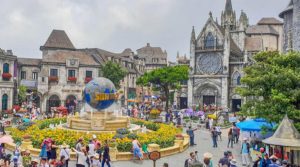 Chua mount also possesses very beautiful forests with green pine hills. Ba Na Nui Chua mountain resort has a rich and diverse fauna and flora system.
Chua mount also possesses very beautiful forests with green pine hills. Ba Na Nui Chua mountain resort has a rich and diverse fauna and flora system.
The vast primeval forests are home to 256 species of animals, including 61 species of mammals, 178 species of birds, and 17 species of reptiles. The flora here has 543 species including 136 families and 379 genera.
Chua mountain is also home to many rare and precious animals, such as the crested argus, the Asian black bears, the red-cheeked gibbon…
Nam O Reef
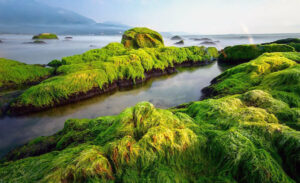 Located about 17 km from the center, Nam O reef captures visitors’ hearts with the cool green color of its mossy rocks. The best time for you to go to Nam O Reef is around March – April. At this time, the weather has just stopped being cold but it is not yet hot; everywhere, rocks covered with green moss lying on the clear beach.
Located about 17 km from the center, Nam O reef captures visitors’ hearts with the cool green color of its mossy rocks. The best time for you to go to Nam O Reef is around March – April. At this time, the weather has just stopped being cold but it is not yet hot; everywhere, rocks covered with green moss lying on the clear beach.
In addition to familiar activities on the beach such as seafood fishing, beach camping, scuba diving to see coral, when coming to Nam O Reef you can visit Nam O fish sauce village to understand more about the traditional craft village as well as buying some bottles of local fish sauce as gifts for friends and relatives.
Besides, don’t forget to enjoy seafood here, especially Nam O fish salad. The salad made from freshly caught herring mixed with a “secret” sauce recipe only available at Nam O will bring you an impressive and unforgettable culinary experience.
Nam O Reef location Hoa Hiep Nam ward, Lien Chieu district, Da Nang city.
Bridges in Da nang
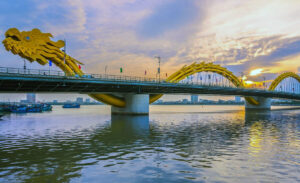 Da Nang is known as the city of bridges in Vietnam. Dragon Bridge, Han River Swing Bridge, Tran Thi Ly Bridge, Love Bridge are attractions that attract visitors to sightsee and check-in. Right near the Love Bridge is a statue of a carp turning into a dragon.
Da Nang is known as the city of bridges in Vietnam. Dragon Bridge, Han River Swing Bridge, Tran Thi Ly Bridge, Love Bridge are attractions that attract visitors to sightsee and check-in. Right near the Love Bridge is a statue of a carp turning into a dragon.
In particular, Dragon Bridge is more crowded on the weekend nights when the dragon performances that spray water and fire. From 21pm, many tourists and people gathered on the bridge, on both sides of the Han River or in nearby high-rise buildings. Vehicles traveling at both ends of the bridge were stopped for 15 minutes of the show.
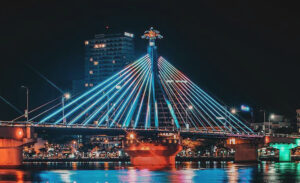 Visitors should choose a suitable standing direction, or wear a raincoat or umbrella to avoid getting wet when watching the water spray performance.
Visitors should choose a suitable standing direction, or wear a raincoat or umbrella to avoid getting wet when watching the water spray performance.
Han River Bridge is the first swing bridge in Vietnam. Han River Bridge has a length of nearly 500 m and a width of 13 m with 11 spans.
The bridge part located in the middle of the river can turn 90 degrees parallel to the flow direction to allow large ships to pass.
Local markets
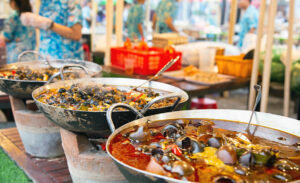 Located on Ong Ich Khiem street right in the city center, Con market is one of the oldest and largest markets in the coastal city. Con Market is considered a snack paradise with many restaurants that are always crowded, selling a variety of foods, from breakfast, lunch, and especially snacks in afternoon. Banh beo, rice paper rolled with pork, Quang noodles, snails, sweet soup… are popular with prices starting from 10,000 VND. In addition to food, local specialties bought as gifts are also sold in many varieties such as fish sauce, tamarind-marinated squid, beef patties, etc.
Located on Ong Ich Khiem street right in the city center, Con market is one of the oldest and largest markets in the coastal city. Con Market is considered a snack paradise with many restaurants that are always crowded, selling a variety of foods, from breakfast, lunch, and especially snacks in afternoon. Banh beo, rice paper rolled with pork, Quang noodles, snails, sweet soup… are popular with prices starting from 10,000 VND. In addition to food, local specialties bought as gifts are also sold in many varieties such as fish sauce, tamarind-marinated squid, beef patties, etc.
Han Market is located right in the city center, near the Han River bridge, adjacent to Hung Vuong, Tran Phu, Tran Hung Dao and Bach Dang streets on 4 sides. The market dates back to the 40s of the last century, but with a convenient location for both road and waterway traffic, this place is increasingly developed and bustling.
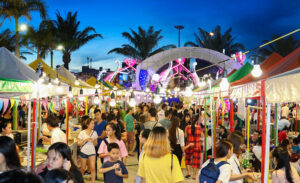
The city has many seafood markets, but the most attractive is still the area located along Vo Nguyen Giap street and the coastal streets of Son Tra district, Da Nang. Here the stalls display all kinds of newly caught seafood, from oysters, snails, crabs, to very fresh fish, shrimp, squid…
In addition, Da Nang also has bustling night markets such as Helio night market (2/9 Street, Hai Chau), Son Tra night market (Ly Nam De street intersects with Mai Hac De, Son Tra), Thanh Khe night market West (Yen Khe 1 street, Thanh Khe district), Le Duan night market (144 Le Duan, Hai Chau), Hoa Khanh night market (Nguyen Canh Chan street). This is a vibrant shopping and dining paradise at night for both residents and tourists.
Than Tai Mountain Hot Spring Park
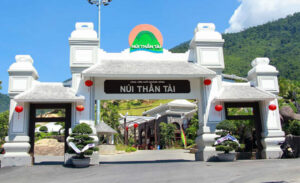 If you have enjoyed enough of the noisy atmosphere of the coastal city and want to find a quiet space between the mountains and forests to relax and unwind, then Than Tai Mountain Hot Spring Park will definitely be the next tourist destination.
If you have enjoyed enough of the noisy atmosphere of the coastal city and want to find a quiet space between the mountains and forests to relax and unwind, then Than Tai Mountain Hot Spring Park will definitely be the next tourist destination.
Located in Phu Tuc village, Hoa Phu commune, Hoa Vang district, Than Tai mountain hot spring is another wonderful gift that nature has bestowed on this land. With a cool climate all year round and surrounded by vast forests and mountains, Than Tai Mountain hot springs are truly a “paradise” of relaxation for those who love forests and mountains.
Tourists coming here, in addition to soaking in the hot water that is beneficial for their health, can also enjoy high-class entertainment and resort services such as Japanese-style Onsen bathing, playing at the water park, mud bath, lazy river, Jura Park dinosaur park…ect.
Da Nang cuisine
After having fun exploring Da Nang, don’t forget to try the specialties of this land
Quang noodles
This is a popular dish in Da Nang. Some places on Hai Phong, Nguyen Huu Tho, Nguyen Cong Tru streets sell all day. Mi Quang is a dry dish. A bowl of “traditional” Quang noodles has flat white noodles, shrimp, pork or chicken, eggs, served with herbs and never lacks roasted peanuts and crispy toasted sesame rice paper.
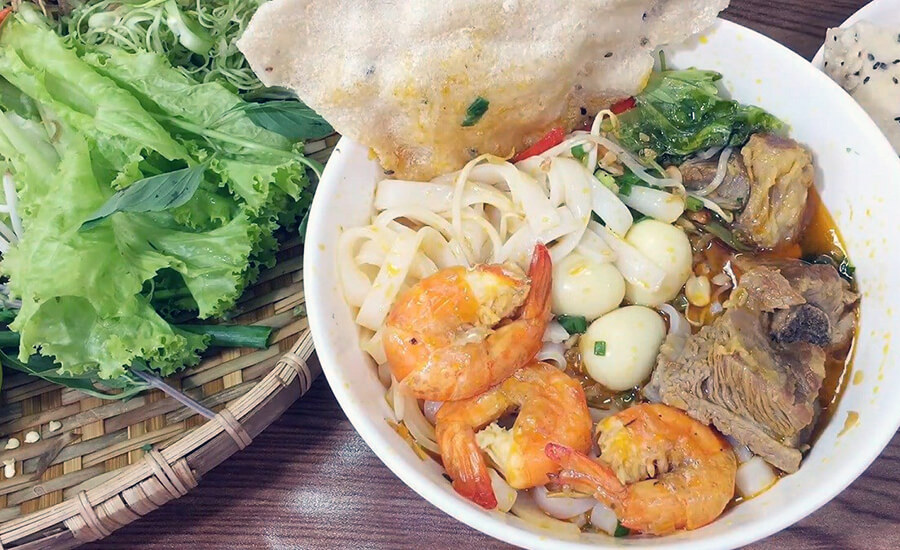
If you are a vegetarian, the main ingredients are tofu, mushrooms and tubers.
Fish noodle soup
Although it is a dish found in many regions, Da Nang fish noodle soup has a unique flavor that cannot be found anywhere else. There are two types of fish noodle soup: steamed fish and fried fish cake (or both). Especially in the Central region, the noodles are delicious because of the broth.
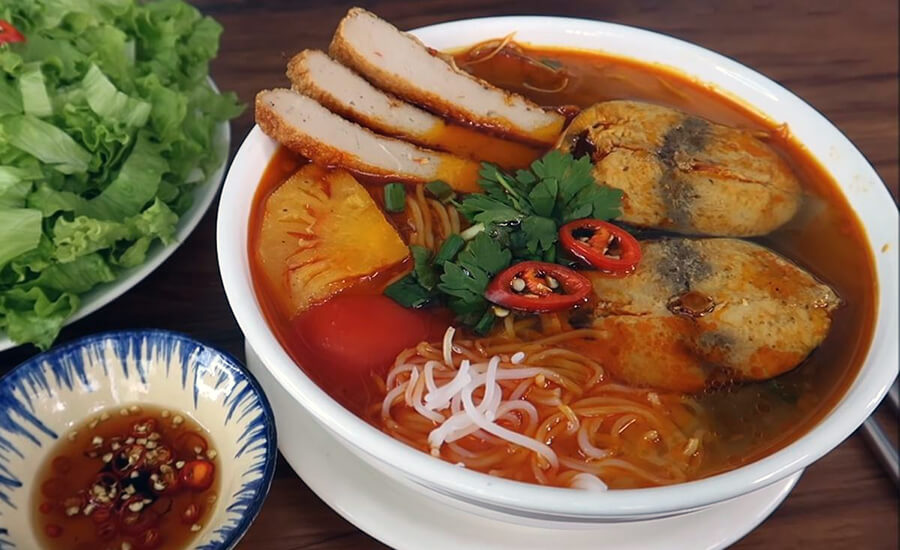
Vermicelli noodles are often served with lettuce, bean sprouts and don’t forget to add a little local fermented shrimp sauce.
Pancakes
Da Nang pancakes are not too small and not too big, just the right size. Banh xeo in Da Nang is made from ground rice flour with added egg yolks and turmeric powder, cooked in a hot pan. The filling is also carefully selected, made only from fresh shrimp, pork belly and fresh bean sprouts.
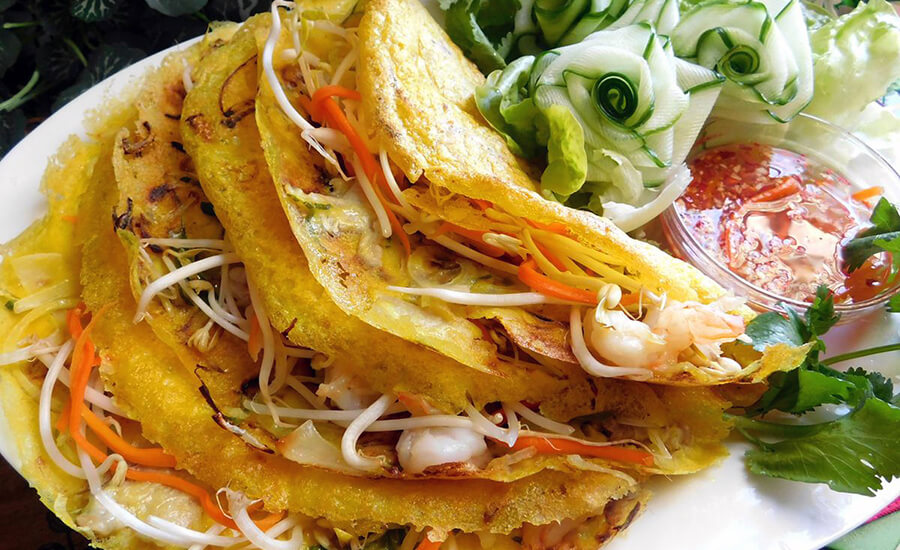
The pancakes serve with raw vegetables, including lettuce, basil, banana, baby mustard greens… with sauce mixed from ground peanuts creates a dipping sauce with a rich, fatty flavor or the traditional chilli garlic sauce.
Mixed jackfruit
Mixed jackfruit, simply boiled young jackfruit until just cooked. Tear into pieces to mix with pork belly salad or white shrimp or shredded pork skin. Add crushed peanuts, fried onions, sweet and sour fish sauce with a little Vietnamese coriander and basil. But it makes people ecstatic with its seductive scent and eye-catching colors.
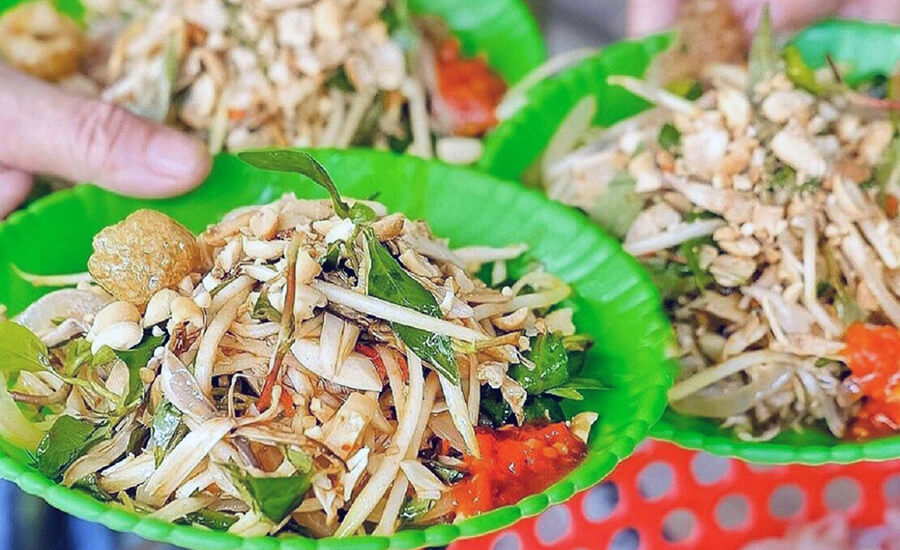
Eat jackfruit mixed with sesame rice paper. Break a piece of rice paper and scoop a piece of mixed jackfruit, this is the way of local people enjoy the dish.
Nam O fish salad
The fish used to make this dish can be from sardines, anchovies… however the most delicious is still herring. The characteristic feature of Nam O fish salad is the dipping sauce made from boiled fish juice, mixed with Nam O fish sauce, chili, tapioca starch. In addition to the usual accompanying vegetables, Nam O fish salad also has wild herbs… which only grow on Hai Van pass.
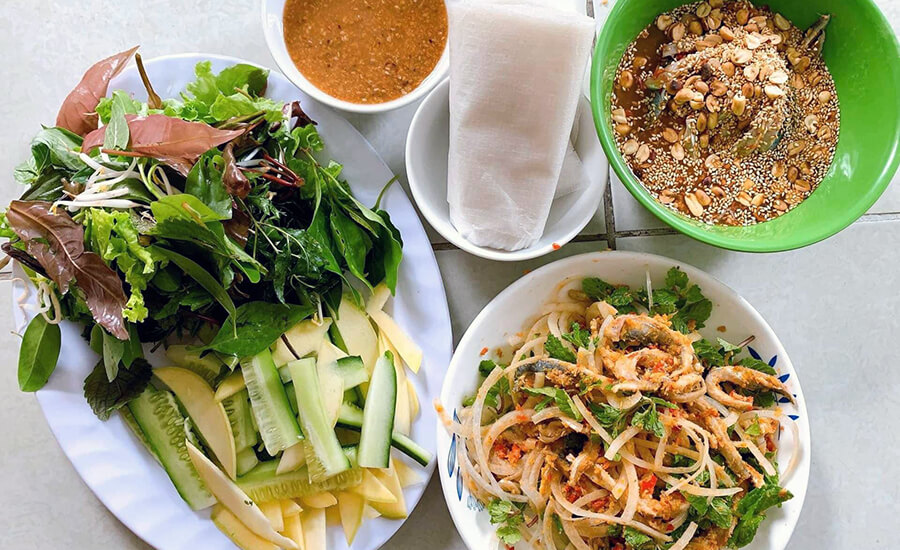
Visitors can eat fish with vegetables and rice paper rolls or just mix fish and vegetables with dipping sauce.
What to buy as a gift?
Mr. Chanh’s cake, Ba De’s cake, Cam Le sesame dried cake, My Khe seaweed, Nam O fish sauce, fresh seafood or dried squid, dried fish… are famous specialties of Da Nang, easy to find, buy and packing luggage.
If you want to buy souvenirs, you can choose silk paintings, embroidery, oil paintings, decorative items made of stone, porcelain, wood… or stone art artifacts from Marble Mountains, clothes from silk and silk fabric.
Vietdreamtravel provides daily and package tours, car/bus rental services and entry visa services for foreign visitors who want to come and explore Da Nang. Do not hesitage to contact us for any support.



